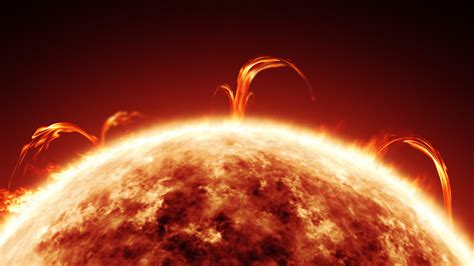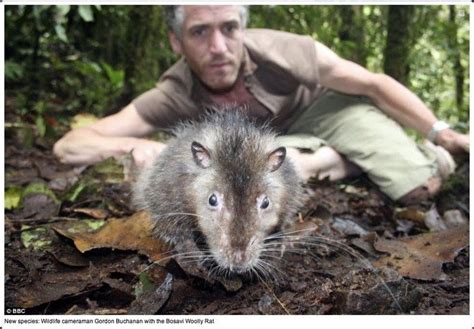
A massive solar storm that occurred approximately 14,300 years ago, far surpassing any recorded in modern history, has left a significant and lasting trace on Earth, according to a new study published in the journal Nature. Scientists analyzing ancient tree rings discovered a dramatic spike in radiocarbon levels, providing compelling evidence of this extreme solar event and offering insights into the potential impacts of similar occurrences in the future.
The research, led by a team of international scientists, suggests that the intensity of this ancient solar storm was significantly greater than the Carrington Event of 1859, the largest solar storm ever directly observed. The findings underscore the importance of understanding extreme space weather events and their potential consequences for modern technological infrastructure. “Extreme solar storms could have huge impacts on our modern society,” said Professor Tim Heaton, one of the study’s authors from the University of Leeds. “Therefore, it is vitally important that we understand how often such events occur, so we can predict and prepare.”
The discovery was made by analyzing radiocarbon levels (a radioactive isotope of carbon) in ancient tree rings from the French Alps. The concentration of radiocarbon increases during periods of intense solar activity because energetic particles from the sun interact with the atmosphere, producing more of this isotope. By carefully examining the tree rings, which act as annual records of environmental conditions, the scientists were able to pinpoint the exact year of the solar storm and estimate its magnitude.
“Radiocarbon is constantly produced in the upper atmosphere through a chain reaction initiated by cosmic rays. When energetic particles from the sun hit the atmosphere, they produce even more radiocarbon,” explained Edouard Bard, a professor at the Collège de France and Aix-Marseille University and a co-author of the study. “By measuring radiocarbon levels in tree rings formed over thousands of years, we can reconstruct a history of solar activity.”
The spike in radiocarbon observed in the tree rings from 14,300 years ago was unprecedented, exceeding any other known event in the Holocene epoch, the current geological epoch that began approximately 11,700 years ago. This suggests that the ancient solar storm was an exceptionally rare and powerful event.
While the exact mechanisms that trigger such extreme solar storms are still not fully understood, scientists believe they are related to disturbances in the sun’s magnetic field. The sun’s magnetic field undergoes a roughly 11-year cycle of activity, during which the number of sunspots (regions of intense magnetic activity) increases and decreases. Solar flares and coronal mass ejections (CMEs), which are sudden releases of energy and plasma from the sun, are more frequent during periods of high solar activity.
“These super-flares or coronal mass ejections can release immense amounts of energy and particles into space,” said Professor Heaton. “If one of these events were to hit Earth today, it could cause widespread disruption to our power grids, communication systems, and satellite technology.”
The Carrington Event of 1859, which was caused by a powerful solar flare, resulted in spectacular auroral displays that were visible as far south as the Caribbean. The event also caused widespread disruptions to telegraph systems, with operators reporting shocks and fires. While the Carrington Event was a significant event, the new study suggests that the solar storm 14,300 years ago was significantly more powerful, potentially by a factor of ten or more.
The implications of such an event occurring today are profound. A solar storm of that magnitude could cause widespread blackouts, damage to critical infrastructure, and disruptions to communication and navigation systems. Satellites could be damaged or destroyed, disrupting services such as GPS, weather forecasting, and telecommunications. The economic impact of such an event could be in the trillions of dollars.
The study’s findings highlight the need for improved monitoring and prediction of solar activity. Space weather forecasting is a relatively new field, and scientists are still working to develop accurate models that can predict the occurrence and intensity of solar storms. Improved forecasting capabilities would allow for better preparedness and mitigation efforts, reducing the potential impact of extreme space weather events.
“Understanding these past events is crucial to predicting and mitigating the effects of future events,” said Professor Bard. “We need to invest in better monitoring systems and develop strategies to protect our critical infrastructure from the impacts of extreme space weather.”
One of the challenges in studying ancient solar storms is the limited availability of data. Tree rings provide a valuable record of past solar activity, but they are only available for certain regions and time periods. Other sources of information, such as ice cores and lake sediments, can also provide clues about past solar activity, but these records are often less precise than tree rings.
Despite these challenges, scientists are making progress in understanding the frequency and intensity of extreme solar storms. By combining data from different sources and using sophisticated modeling techniques, they are developing a more complete picture of the sun’s past behavior and its potential future impact on Earth.
The study’s authors emphasize that while extreme solar storms are rare events, they are a natural hazard that needs to be taken seriously. The potential consequences of such an event are too great to ignore. By investing in research, monitoring, and preparedness, we can reduce our vulnerability to the impacts of extreme space weather and protect our modern technological society.
The research has spurred further investigation into other extreme solar events in the past, with scientists examining various archives to identify and characterize such occurrences. This collaborative effort aims to create a comprehensive timeline of extreme solar events, providing a clearer picture of their frequency and intensity over long periods. This historical perspective is essential for developing accurate risk assessments and implementing effective mitigation strategies.
Furthermore, the study has prompted discussions on the need for enhanced international cooperation in space weather monitoring and prediction. Given the global nature of the potential impacts of extreme solar storms, a coordinated international effort is crucial for developing and deploying effective warning systems. This includes sharing data, expertise, and resources to improve our ability to predict and respond to these events.
The findings also underscore the importance of considering space weather risks in the design and operation of critical infrastructure. This includes hardening power grids, communication systems, and satellite technology to make them more resilient to the effects of solar storms. For example, power grids can be equipped with surge protectors to prevent damage from geomagnetically induced currents, and satellites can be designed with shielding to protect them from radiation.
In addition to technological measures, public awareness and education are also essential for mitigating the impacts of extreme solar storms. By educating the public about the potential risks and providing guidance on how to prepare, we can reduce the level of disruption and ensure that people are able to cope with the aftermath of such events. This includes developing emergency plans, stockpiling essential supplies, and knowing how to communicate in the event of a widespread power outage.
The study serves as a stark reminder of the power of the sun and its potential to impact life on Earth. While solar storms are a natural phenomenon, their potential consequences for our modern technological society are significant. By taking the necessary steps to understand, monitor, and prepare for these events, we can reduce our vulnerability and protect ourselves from their potentially devastating effects.
The research team plans to continue studying ancient tree rings and other archives to further refine our understanding of past solar activity. They also hope to develop more sophisticated models that can better predict the occurrence and intensity of solar storms. This ongoing research is essential for ensuring that we are adequately prepared for the challenges posed by extreme space weather.
The scientific community is actively working on improving space weather forecasting capabilities. This involves developing more accurate models of the sun’s magnetic field and its interaction with the Earth’s magnetosphere. These models are based on data from a variety of sources, including ground-based observatories and satellites in space.
One of the key challenges in space weather forecasting is predicting the timing and intensity of coronal mass ejections (CMEs). CMEs are large eruptions of plasma and magnetic field from the sun that can travel through space and impact Earth. When a CME hits Earth, it can cause geomagnetic storms that disrupt power grids, communication systems, and satellite technology.
Scientists are using a variety of techniques to study CMEs, including imaging them with telescopes and measuring their magnetic field. They are also developing computer models to simulate the propagation of CMEs through space. These models can help predict when a CME will reach Earth and how strong its impact will be.
Another area of research is focused on understanding the relationship between solar flares and CMEs. Solar flares are sudden bursts of energy from the sun that are often associated with CMEs. Scientists are trying to determine what triggers solar flares and how they lead to the formation of CMEs.
By improving our understanding of these processes, scientists hope to develop more accurate space weather forecasts that can help protect our critical infrastructure from the impacts of solar storms.
The study also raises questions about the potential impact of extreme solar storms on the Earth’s climate. Some scientists believe that solar activity can influence the Earth’s climate, although the mechanisms are not fully understood. It is possible that extreme solar storms could have a significant impact on the Earth’s atmosphere and temperature. Further research is needed to investigate this potential link.
The findings of this study underscore the importance of interdisciplinary collaboration in addressing complex scientific challenges. The research team included scientists from a variety of fields, including archaeology, geology, and physics. By working together, they were able to combine their expertise and develop a more comprehensive understanding of the ancient solar storm.
This interdisciplinary approach is essential for addressing other complex scientific challenges, such as climate change and biodiversity loss. By bringing together scientists from different fields, we can develop more effective solutions to these problems.
The discovery of this ancient solar storm has significant implications for our understanding of the sun and its potential impact on Earth. It serves as a reminder that extreme space weather events are a natural hazard that needs to be taken seriously. By investing in research, monitoring, and preparedness, we can reduce our vulnerability to the impacts of these events and protect our modern technological society.
The study highlights the importance of preserving and studying ancient archives, such as tree rings, ice cores, and lake sediments. These archives provide valuable information about past environmental conditions and can help us understand the Earth’s history. By studying these archives, we can learn more about the natural hazards that have affected the Earth in the past and how we can prepare for them in the future.
The findings of this study have been widely reported in the media and have generated significant public interest. This is a positive development, as it helps to raise awareness of the importance of space weather and the potential risks posed by extreme solar storms. By educating the public about these issues, we can encourage them to support efforts to improve space weather monitoring and preparedness.
The research team hopes that their findings will inspire further research into the sun and its potential impact on Earth. They also hope that their work will help to inform policy decisions related to space weather and critical infrastructure. By working together, scientists, policymakers, and the public can ensure that we are adequately prepared for the challenges posed by extreme space weather.
In conclusion, the discovery of this ancient solar storm is a significant scientific achievement that has important implications for our understanding of the sun and its potential impact on Earth. The study underscores the need for improved monitoring and prediction of solar activity and highlights the importance of taking steps to protect our critical infrastructure from the impacts of extreme space weather. By investing in research, monitoring, and preparedness, we can reduce our vulnerability to these events and protect our modern technological society.
Frequently Asked Questions (FAQ):
1. How was the ancient solar storm discovered?
Scientists discovered the ancient solar storm by analyzing radiocarbon levels in ancient tree rings from the French Alps. A dramatic spike in radiocarbon levels indicated an exceptionally powerful solar event occurred approximately 14,300 years ago. “Radiocarbon is constantly produced in the upper atmosphere through a chain reaction initiated by cosmic rays. When energetic particles from the sun hit the atmosphere, they produce even more radiocarbon,” explained Edouard Bard, a professor at the Collège de France and Aix-Marseille University and a co-author of the study. “By measuring radiocarbon levels in tree rings formed over thousands of years, we can reconstruct a history of solar activity.”
2. How does this ancient solar storm compare to the Carrington Event of 1859?
The study suggests that the solar storm 14,300 years ago was significantly more powerful than the Carrington Event, potentially by a factor of ten or more. While the Carrington Event caused disruptions to telegraph systems and auroral displays, a solar storm of the magnitude discovered in the tree rings could have far more devastating consequences for modern technological infrastructure.
3. What are the potential impacts of a similar solar storm occurring today?
If a solar storm of similar magnitude to the ancient event were to occur today, it could cause widespread blackouts, damage critical infrastructure, and disrupt communication and navigation systems. Satellites could be damaged or destroyed, disrupting services such as GPS, weather forecasting, and telecommunications. The economic impact could be in the trillions of dollars.
4. What is being done to prepare for future solar storms?
Efforts are underway to improve the monitoring and prediction of solar activity. This includes developing more accurate models of the sun’s magnetic field and its interaction with the Earth’s magnetosphere. Scientists are also working on hardening power grids, communication systems, and satellite technology to make them more resilient to the effects of solar storms. “Extreme solar storms could have huge impacts on our modern society,” said Professor Tim Heaton, one of the study’s authors from the University of Leeds. “Therefore, it is vitally important that we understand how often such events occur, so we can predict and prepare.”
5. What can individuals do to prepare for a potential solar storm?
While the primary responsibility for mitigating the impact of solar storms lies with governments and infrastructure operators, individuals can take steps to prepare for potential disruptions. This includes developing emergency plans, stockpiling essential supplies (such as food, water, and batteries), and knowing how to communicate in the event of a widespread power outage. Public awareness and education are also crucial for ensuring that people are able to cope with the aftermath of such events.









